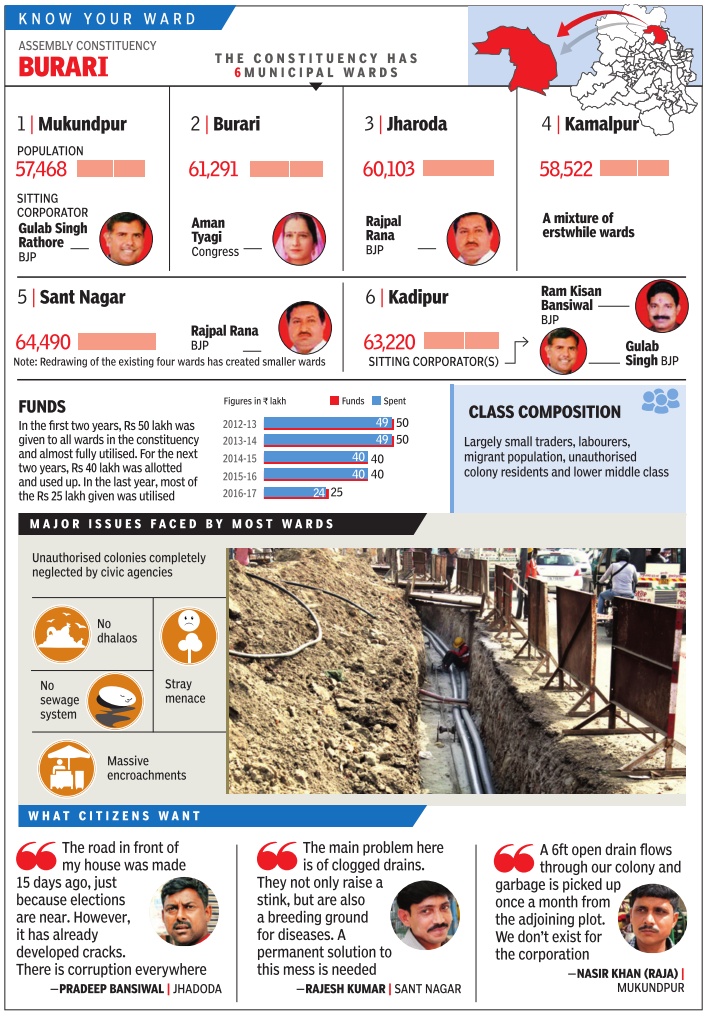Delhi: Burari
This is a collection of articles archived for the excellence of their content. |
Civic issues
2017
Paras Singh, A Poorvanchali pocket no party can take lightly, March 28, 2017: The Times of India

Located between Yamuna Biodiversity Park and the Bhalswa lake, Burari consists of a few old villages surrounded by a number of unauthorised, sub-urban colonies carved out of agricultural land. These colonies are mostly occupied by migrant families from eastern UP and Bihar, which have settled in Delhi over the past two decades. Little wonder that Poorvanchalis in Burari, who constitute 80% of the total population in the assembly constituency , are a vote bank all political parties are vying for.
AAP will kick-start its civic poll campaign in this key constituency with chief minister Arvind Kejriwal's rally on March 3. BJP had organised a large gathering of all the state functionaries here last month.
Post delimitation, Burai bags six municipal wards --Kadipur, Kamalpur, Burari, Jharoda, Sant Nagar, Mukundpur--and becomes the assembly segment with the highest number of wards in the north corporation. Still, the area reeks of neglect as basic amenities are almost absent in this region, which is close to the UP border.
The fact that almost three quarters of this region comprise unauthorised colonies makes it ample clear as to why development has always taken a backseat in Burari.“MCD doesn't exist here,“ said 31-year-old Satender Jha, pointing towards a heap of garbage at the entry to Mukundapur. “Garbage, choked drains, encroached roads, stray dogs and cows. You name a problem and we have it.On top of it, we have to pay MCD employees to get works done. Elections do not mean anything for us; they are just a game of power.“ In the absence of dhalaos, all empty plots in this area have turned into small dumpyards. An open drain flows through Mukundpur and heads towards Sant Nagar and Jhadoda. Each ward in this constituency of over 3.8 lakh people has its own set of problems. “Since the colonies have come up haphazardly on agricultural land, no dhalaos have been constructed. That is why the drains are choked,“ said Mukundpur's councillor Gulab Singh Rathore.
While the state of sanitation in Burari Village is better than that of adjoining localities, villagers attribute it to their own work rather than any effort by the civic authorities. The village, a stronghold of Tyagis, has produced many MLAs and councillors. Sunil Tyagi, a farmer, said, “Despite having our own representatives, nothing much has changed on the ground. With two more councillors, the funds will increase now, but I am sure politicians will continue to pocket the money .“
In the adjoining Sant Nagar, overflowing drains have disfigured the roads built by DSIIDC. Using these stretches is fraught with health risks. Gulab Rathore, a local councillor, said, “MCD has a limited portion of area under its jurisdiction. The rest of the work is to be done by DSIIDC and without the cooperation from local AAP MLA Sanjeev Jha, our hands are tied.“